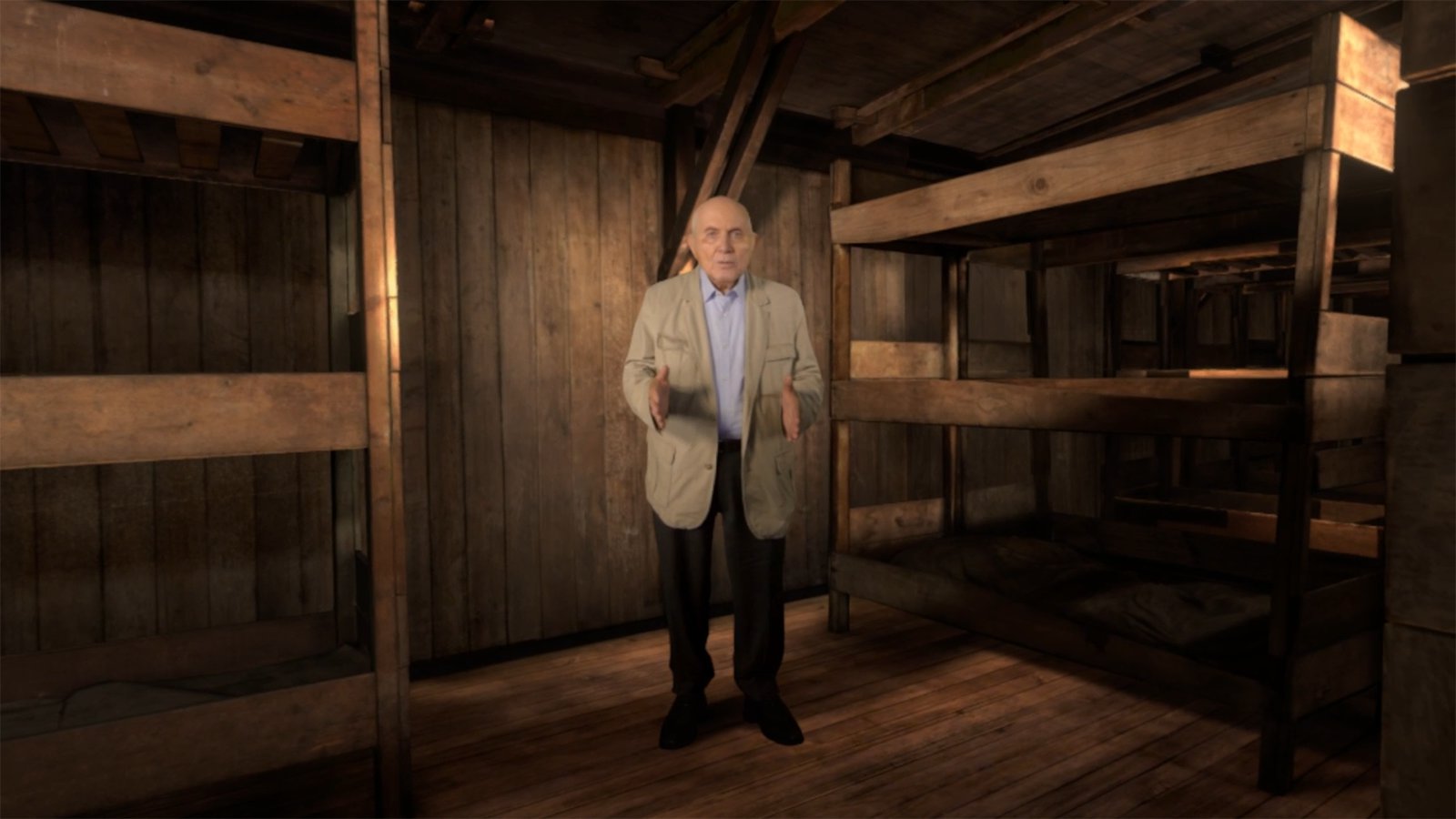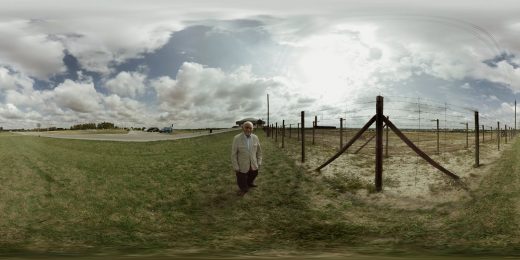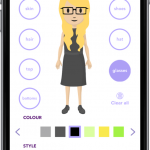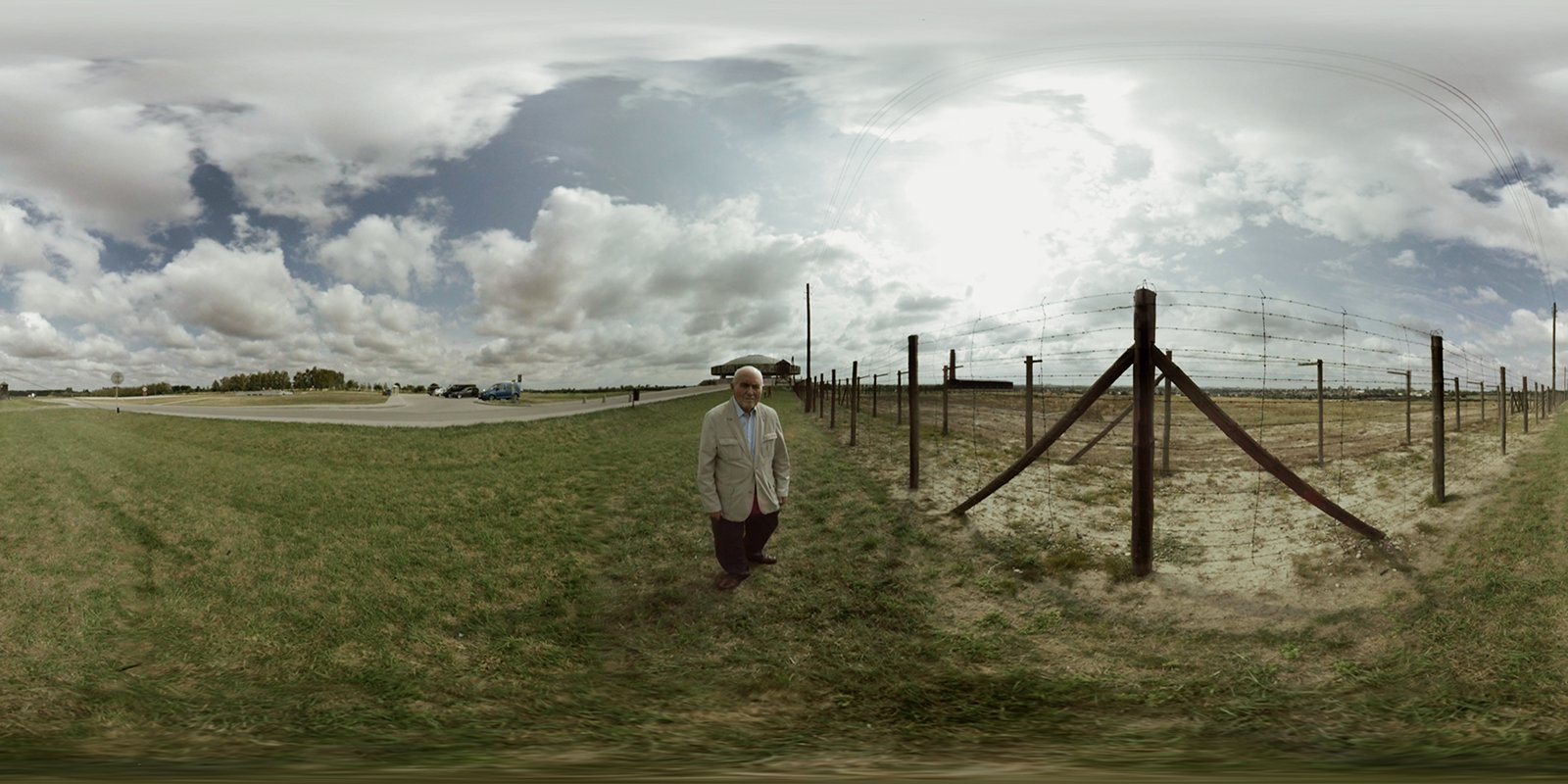‘The Last Goodbye’ is the VR Holocaust memorial we need today
“I think that you have to confront pain to be able to heal it,” Gutter says in the film. “Unless you have somebody that can say, ‘I was here, I saw this, this was done to me,’ I don’t think people would accept it as the gospel truth.”
The Last Goodbye, co-created by Gabo Arora and Ari Palitz, is a co-production by the Shoah Foundation, Here Be Dragons, MPC VR and OTOY. The 16-minute-long experience combines 360-degree video and photorealistic interactive environments from Majdanek. Tens of thousands of photos were captured at the site, and the studios spent five months painstakingly reconstructing them virtually. And, in a VR first, they also recorded high-quality stereo video of Gutter on-location, which results in an avatar that can believably make eye contact with you. All of that makes The Last Goodbye a VR journey that’s as painful as it is immersive.
David Korins, the set designer for the musical Hamilton, developed the installation for The Last Goodbye. It’s the size of a small room, with a mirrored exterior that makes it stand out from the plethora of VR showpieces at Tribeca. Going through the experience involves much more than just donning a VR headset: After walking down a small hallway, I met a guide who directed me to take off my shoes as a sign of respect. I then crossed a threshold of pebbles and stepped into the room, which had bare walls and cool ambient lighting. My guide, in a calm and collected voice, described the basics of the experience to me, helped me set up the headset, and left me alone. I took a deep breath and braced myself for what would likely be an emotionally painful journey.
The Last Goodbye begins in Gutter’s hotel room, where he’s steeling himself for the upcoming trip. He was first sent there with his family when he was 11, and he describes, in heartbreaking detail, the process of how they were stuffed onto a train car with dozens other families. As I started to explore an interactive model of one of those trains, the horrors of the Nazi’s genocidal campaign against the Jewish people came starkly into focus. Someone built this thing just to efficiently ship families to their doom.

That realization was reinforced as I was guided throughout Majdanek. There’s the shower room, where Gutter recites the same Hebrew prayer he did as a child, right after being forced to jump into an anti-septic bath. He was certain he was going to be gassed there. At one point, you see rows upon rows of bunk beds, where he describes the feeling of trying disappear, so that the guards didn’t notice him. Toward the end, we see the furnaces that incinerated tens of thousands of bodies. And that’s where I got sick to my stomach.
It’d be one thing just to see these rooms in VR, but hearing Gutter’s recollection from childhood makes it all the more tragic and meaningful. When he reveals that he can no longer remember anything about his twin sister, aside from her golden braid, it’s hard not to tear up alongside him. I’m not a religious person, but I try to have faith in humanity. Seeing these tools of genocide up close, even virtually, made me physically shake at points.
There’s been plenty of talk about VR as a vehicle for empathy. You’re not just seeing something displayed on a screen, or imagining it from a book; in some sense you’re sharing an experience. And that’s truer than ever before with The Last Goodbye. I’ve gone through countless VR experiences, but this is by far the most meaningful one. And it’s particularly necessary today, when even prominent White House employees can’t recall exactly what happened during the Holocaust.
Looking ahead, The Last Goodbye could end up touring around the world at museums. But I also hope it’s eventually made available for home download. You won’t get to experience the elaborate set design, but it’s still worth seeing Pinchas Gutter’s story in VR. In fact, it’s more important than ever.
(58)














